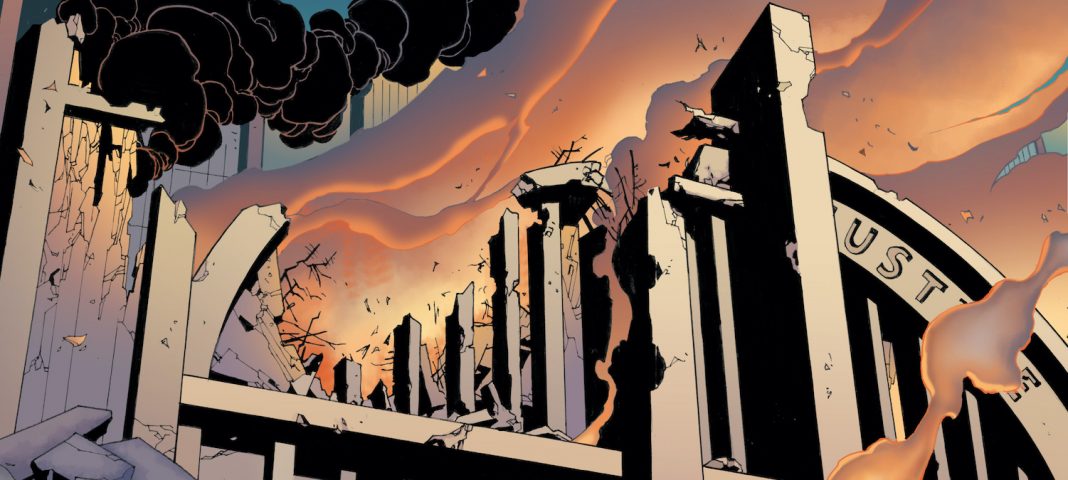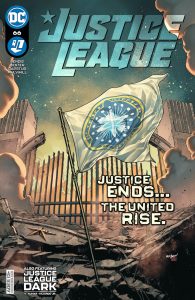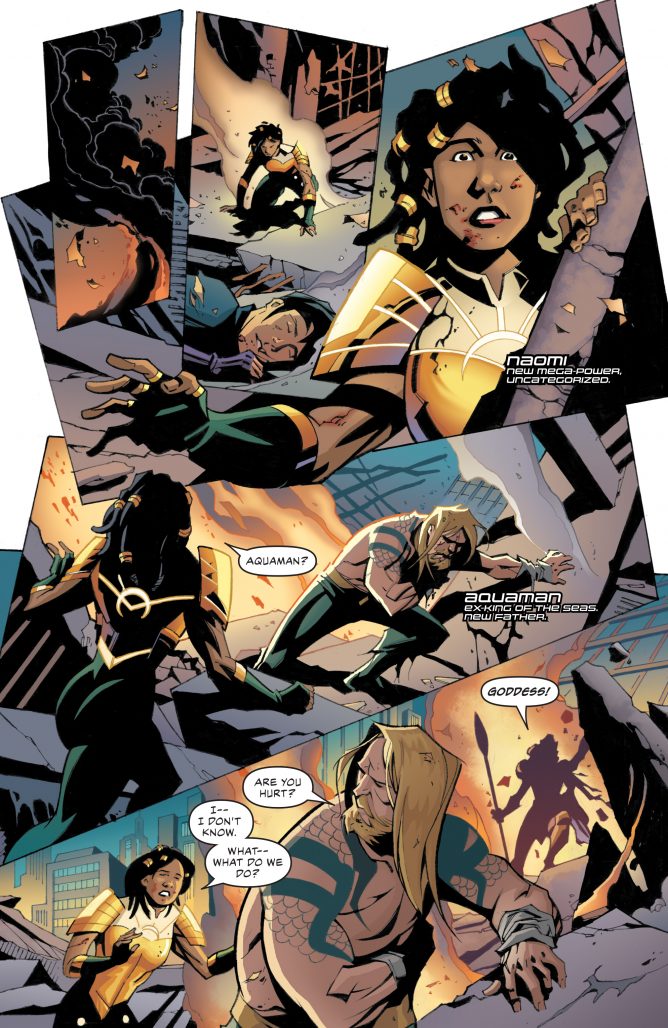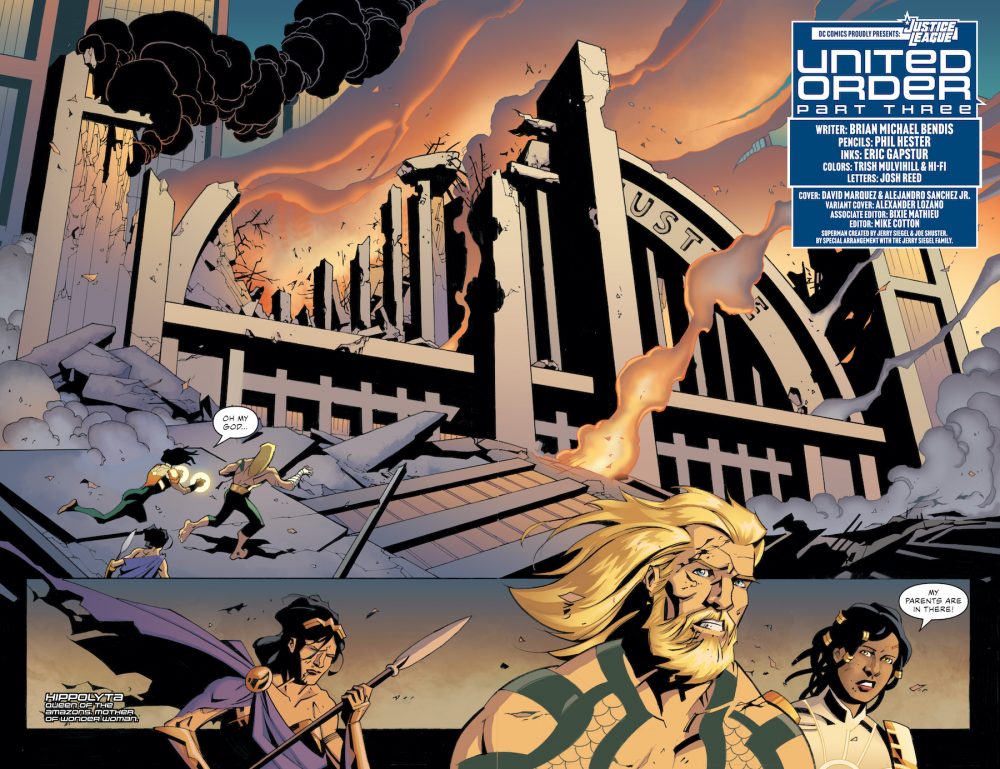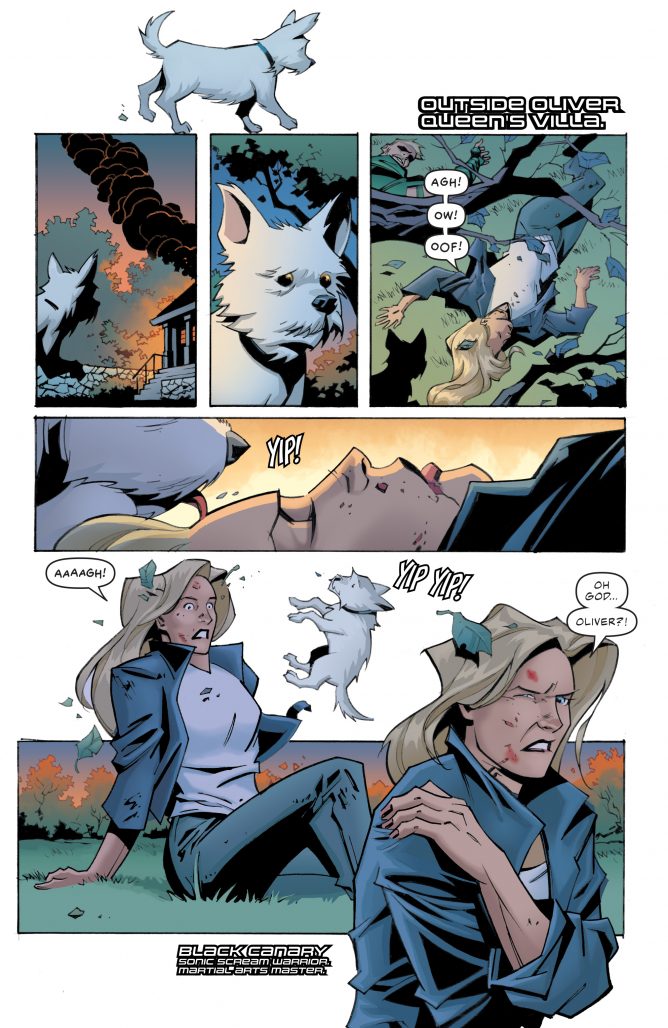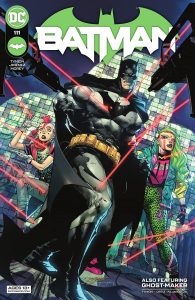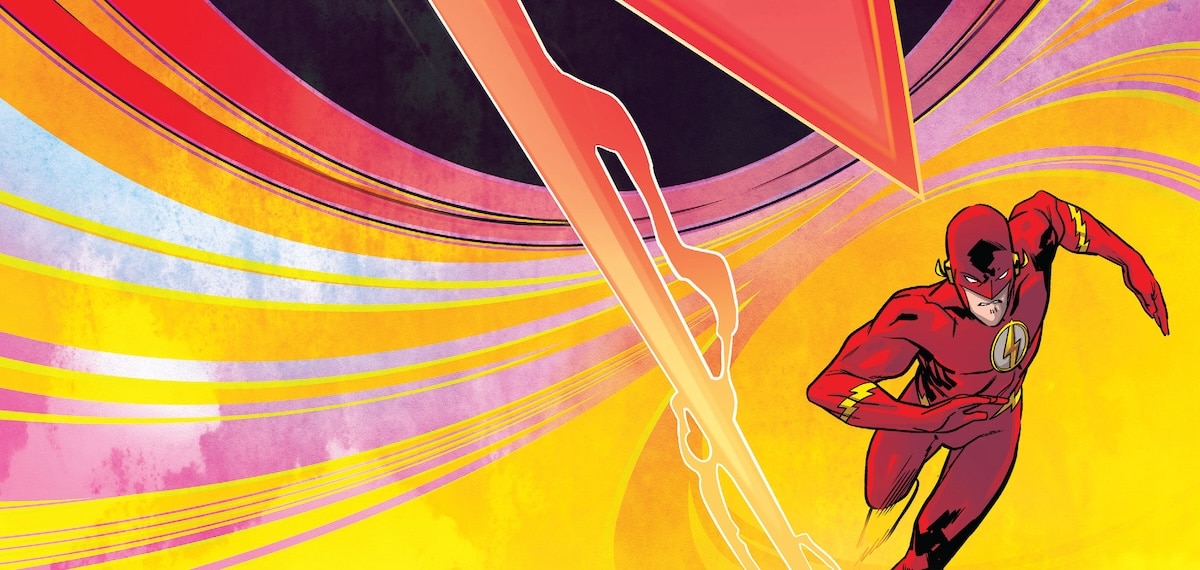THIS WEEK: The Brian Michael Bendis Justice League run continues with Phil Hester and Eric Gapstur filling in this week. We check in with DC’s flagship superhero team title, now well into its second arc. Plus, Batman and The Nice House on the Lake remain all kinds of excellent.
Note: the review below contains spoilers. If you want a quick, spoiler-free buy/pass recommendation on the comics in question, check out the bottom of the article for our final verdict.
 Justice League #66
Justice League #66
Writer: Brian Michael Bendis
Artist: Phil Hester
Inker: Eric Gapstur
Colorists: Trisha Mulvhill and Hi-Fi
Letterer: Josh Reed
When I was reading Justice League #66 — the latest chapter of writer Brian Michael Bendis Justice League run — I felt in part like I was visiting an alternate reality. And not the sort of alternate reality that turns up regularly in these superhero comic books. No, I felt like I was getting a glimpse of a different timeline, one in which Bendis spent the bulk of his career writing for DC Comics rather Marvel, putting his unique stamp on these characters rather than those at the rival publisher.
It remains an odd sensation, seeing Bendis apply his sensibilities to the DC Universe, and it’s one that I also had at times during his 50-some issue Superman run, as well as his adjacent work on books like Event Leviathan, Naomi, and Young Justice, as well as the fantastic standalone Batman Universe. In much of Bendis’ Superman run, his scripting felt just a bit restrained, just a bit more understated than his usual work, marked as it is by pithy dialogue and light character moments. Those restraints seem to have now come off in Bendis Justice League, just a bit. This makes it easier to imagine what Bendis might have done with two decades at the publisher.
In Justice League #66 — the second arc of the Bendis Justice League run — the villain from the final arc of Bendis Superman run continues to wreak havoc upon the League, specifically destroying their headquarters, the Hall of Justice. In short, this villain is he Synmar Utopica, a very powerful being meant to protect another world as Superman protects ours. It’s a very Bendis-y sort of story. Something gigantic and devestating happens (see the destruction of Kandor from his Superman run), and the characters themselves spend much of the issue stunned by it (remarking, of course, to each other that this is indeed crazy).
This issue also continues to do something I’ve enjoyed throughout the entirety of the Bendis Justice League run so far, in that it gives us the perspective of what’s happening to the League through the eyes of its newest member — Naomi — who herself hasn’t been a superhero very long. It’s a great point of entry. For about a decade, the main Justice League title has felt like sort of a shell series, just propping up whatever giant world-altering event is coming next, or pushing pieces into place for the next jolt to the ol’ DC status quo. This run is different. It’s lighter, more fun, and far more human.
And I think by and large this is a glimpse of what Bendis writing for DC Comics would have been like for the past 20 years. His perspective on the DCU throughout his recent work has been one of awe, one of looking up at this pantheon of god-like, 80-year-old characters through the eyes of new heroes and regular people. There’s almost an earnestness to it, and it’s a sensibility that at this point feels welcomed, distant as it is from some of the grittier, darker storytelling that has instead marked DC Comics for a good while. I’m enjoying it quite a bit, plus also the jokes have been relatively strong.
The selection of artist collaborators has also been fantastic. The first arc opened with David Marquez — one of the best in the superhero business — before giving us Steve Pugh for a couple of issues and now Phil Hester, who is inked here by Eric Gapstur. It might be Hester’s work in this book that has me dwelling on the past too, given Hester being the central creator for one of the best modern runs of Green Arrow, the one constant in the early ’00s as that book bounced writers, from Kevin Smith to Brad Meltzer to Judd Winick. It made me imagine Bendis in those days taking over Green Arrow from Smith rather than Daredevil, which (for better or worse) gave me the idea with which to approach writing about this title.
Anyway, I get that Bendis can be a polarizing writer. Spend any time in online comics discussion circles and you will quickly learn that some readers have an outright aversion to his scripting, one they just won’t ever overcome. Also, humor in comics is a tricky thing. Bendis jokes work for me, though, and I find his voice to be singular in a way that just screams comics. He gets the goofiness of the superhero concept as well as the grandiosity, and it’s a combination it’s nice to see applied to the Justice League. It all adds up to a fun — if slightly understated — superhero comics run.
Verdict: Buy
Round-Up
Two of my other favorite DC Comics remained excellent this week, those being Batman and The Nice House on the Lake. Batman #111 sees the creative team on that book — writer James Tynion, artist Jorge Jimenez, colorist Tomeu Morey, and letterer Clayton Cowles — continue to essentially update the Batman concept for 2021, yet doing so through a series of interesting new character introductions and absurdly well-paced action-packed issues. Meanwhile, Tynion’s other book, The Nice House on the Lake — with artist Álvaro Martinez Bueno, colorist Jordie Bellaire, and letterer AndWorld Design — also remains excellent. This book had a perfect debut issue, and has now gone into great episodic storytelling mode, centering subsequent chapters on individual members of the wide cast of characters as it doles out more of what’s happening in said Nice House. It’s just an impeccable structure that lets the artists shine, and there’s not really another book like it right now at DC (not even close).
- Sad to report that Suicide Squad: Get Joker #1 was a big miss for me, which is maybe surprising given that I really love Alex Maleev’s artwork. The book has about one interesting idea/plot twist in it, which we don’t get until the last of 40-plus pages. Meanwhile, the preceding pages spend their time rehasing very old DC concepts — namely Death in the Family and the Suicide Squad itself — in ways that somehow feel both familiar and slightly confusing. I get that this is a movie tie-in and it has a lot of work to do to be accessible for new or lapsed readers, but also, the work it does for them just doesn’t feel interesting or good. It also just refuses to even engage with how Jason Todd returned from the dead, so it ends up doing this weird dance of catching readers up about somethings while utterly ignoring giant questions said catch-up is likely to leave them with.
- Finally, Crush and Lobo #3 is another great issue in what for me has been a surprise favorite book this year. The tone is dead-on, and the plot twist we all should have seen coming pays off wonderfully here. Loving this book.
Miss any of our earlier reviews? Check out our full archive!


